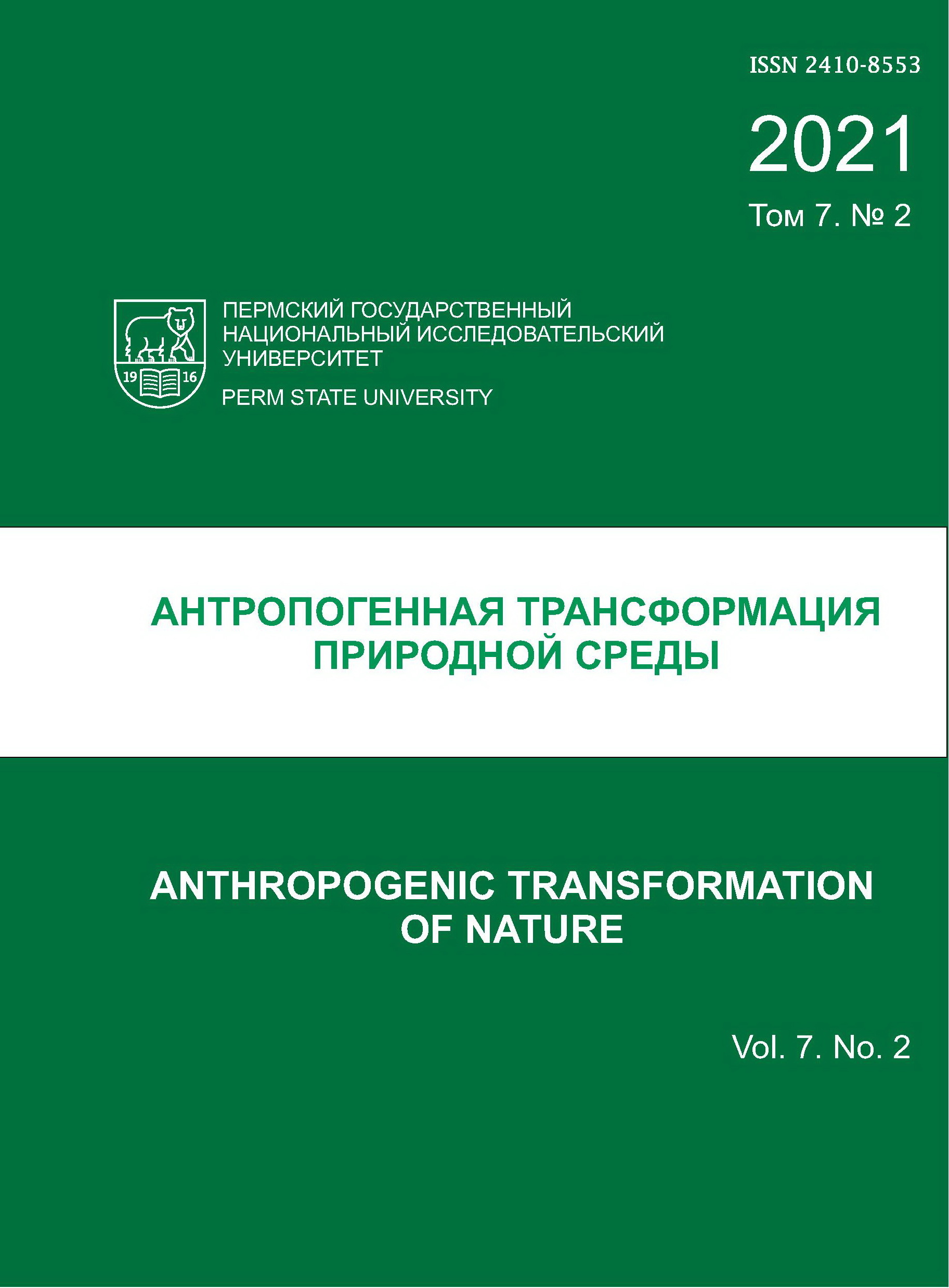Anthropogenic transformation of forest ecosystems by geochemical and photosynthetic parameters
DOI:
https://doi.org/10.17072/2410-8553-2021-2-49-57Ключевые слова:
forest ecosystems, anthropogenic influence, delayed fluorescence, geochemical indices, stage of degradationАннотация
Geochemical and physiological indices gained at the background area and at the area under anthropogenic impact were compared. The study sites comprise 30 sample areas each. Overall, 600 samples of pine needles were designated for the delayed chlorophyll fluorescence measurement as well as 60 samples of soil and pine needle correspondingly were selected to perform the geochemical analysis. The biological uptake of the pine urban ecosystems is represented in the range: Mn (10,16) > P (7,19) > Ag (2,78) > Ba (2,76) > Cu (2,31) > Sr (1,85) > Ni (1,80) > Zn (1,75) > Pb (0,86) > Co (0,48) > Cr (0,40) > Zr (0,37) > V (0,36) > Ga (0,33) > Ti (0,21). In comparison with the background site data the biological uptake is increased in regard to V, Ti, Ni, Cu, Cr. The methodology implies the method of recording the relative index of delayed fluorescence with the help of fluorimeter “Photon 10”. The data accumulated in the course of the geochemical analysis allowed to distinguish common geochemical features of the study sites and revealed differences in soil and needle qualities. The value of relative index of delayed fluorescence (RIDF) under the impact of considerable anthropogenic impact is lower by 25% and more related to the background site. This deviation testifies that the human impact is present even on the early stage of ecosystem degradation.Загрузки
Опубликован
2021-12-14
Как цитировать
Andreev, D., & Buzmakov, S. (2021). Anthropogenic transformation of forest ecosystems by geochemical and photosynthetic parameters. Антропогенная трансформация природной среды, 7(2), 49–57. https://doi.org/10.17072/2410-8553-2021-2-49-57
Выпуск
Раздел
Трансформация природной среды

